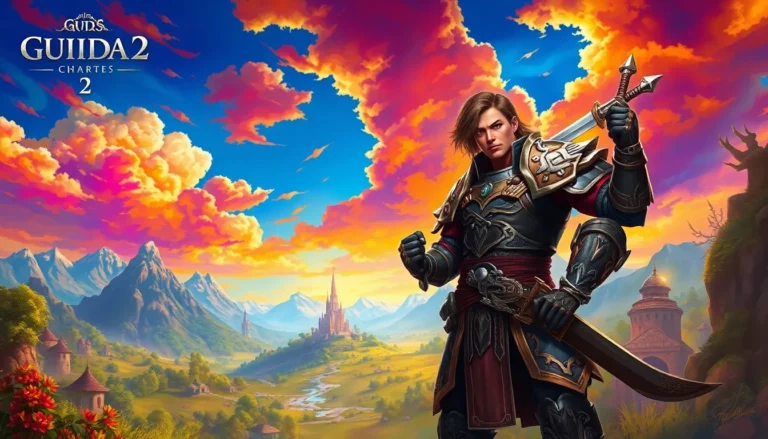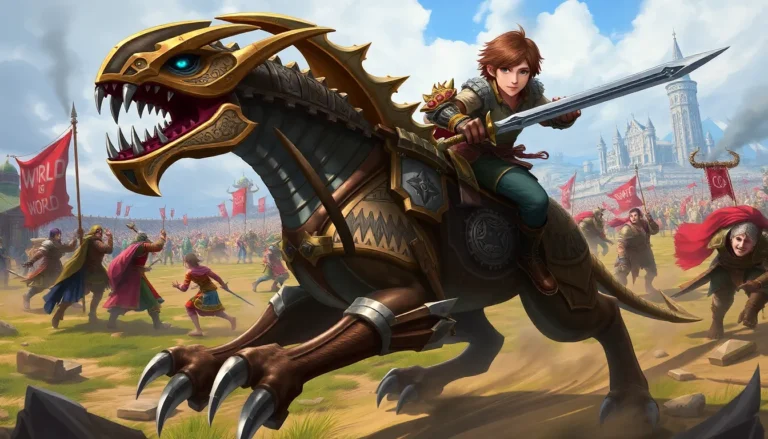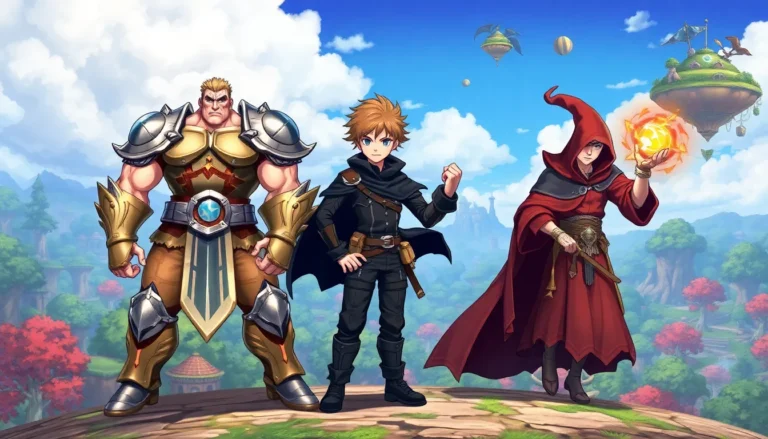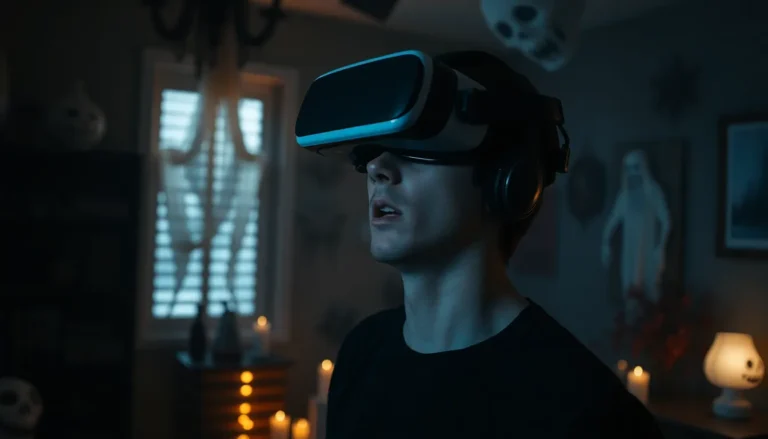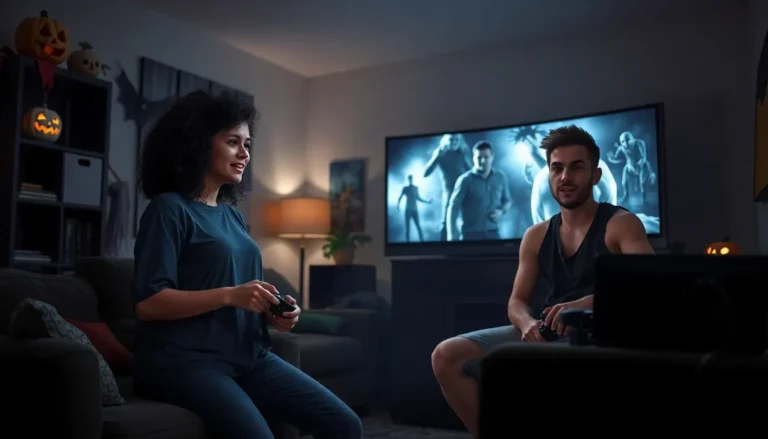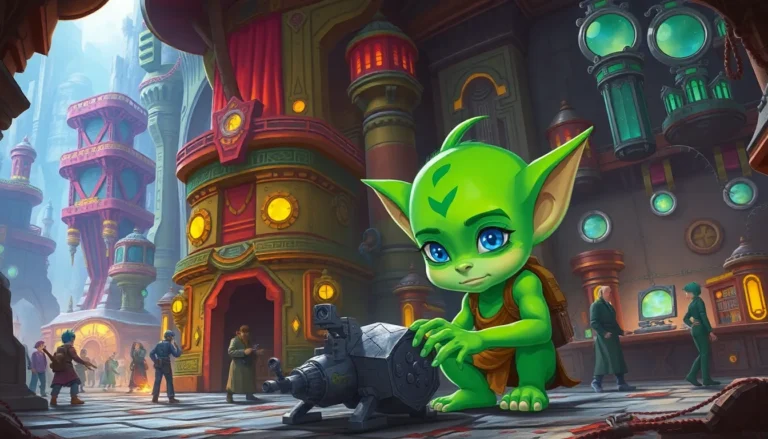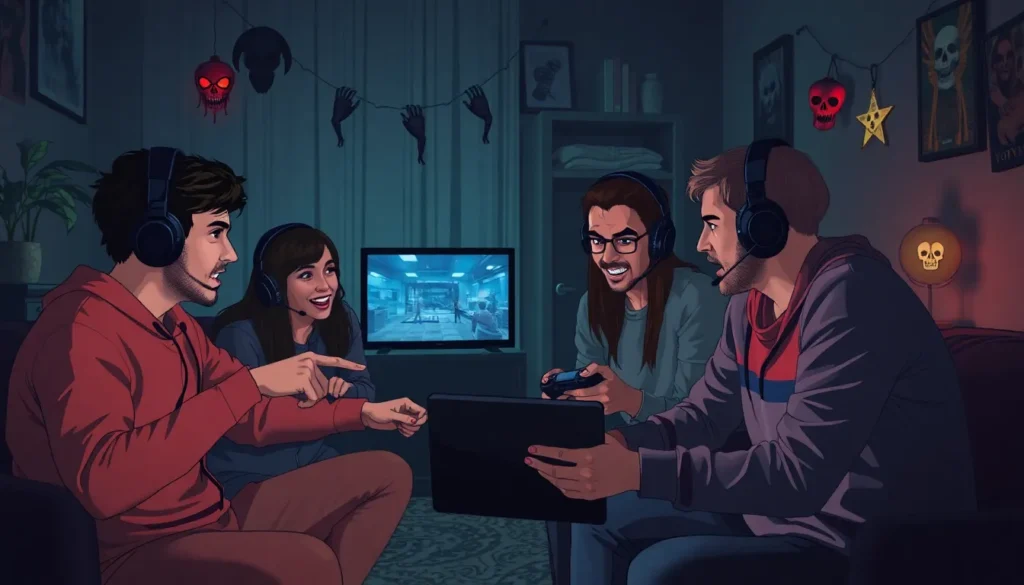Table of Contents
ToggleWhen it comes to horror games, nothing beats the thrill of sharing the spine-chilling experience with friends. Imagine the adrenaline rush as you navigate through dark corridors, your heart racing with every creak of the floorboards. Good multiplayer horror games not only test your courage but also your friendships. Who knew screaming at your buddy could strengthen your bond?
What Are Good Multiplayer Horror Games?
Good multiplayer horror games create thrilling experiences that bring players together. Titles like “Dead by Daylight” immerse players in a cat-and-mouse dynamic with one killer and multiple survivors, fostering intense teamwork and strategy. “Phasmophobia” engages participants in ghost-hunting missions, demanding cooperation to uncover clues and escape from supernatural entities.
Another example, “Friday the 13th: The Game,” draws inspiration from the iconic film franchise, placing players in a camp setting where they can either evade Jason or try to stop him. Players can choose to play as counselors or the infamous killer, amplifying the horror and tension.
Games like “The Forest” combine survival mechanics with horror elements. Players navigate a post-apocalyptic island filled with mutant creatures, requiring them to gather resources and craft tools while facing constant danger together. “When the Darkness Comes” offers a narrative-driven experience, where players explore unsettling environments while unraveling psychological horrors.
Teamwork is crucial in these games, as communication enhances gameplay and heightens fear. Horror elements like jump scares and atmospheric soundscapes unleash adrenaline, making multiplayer experiences memorable. The social aspect allows friends to share their fears, fostering deeper connections.
Friendship’s strength emerges as players face terrifying challenges together. The laughter and screams from unexpected encounters create lasting memories. Multiplayer horror games stand out for their unique ability to create both fear and camaraderie, making them ideal for group play.
Features of Good Multiplayer Horror Games

Good multiplayer horror games offer unique elements that enhance the overall experience. Engaging mechanics can create memorable moments for players.
Cooperative Gameplay
Cooperative gameplay is essential in multiplayer horror games. Players often work together to achieve shared objectives, fostering teamwork. Effective communication drives success during intense encounters. Games like “Dead by Daylight” emphasize cooperation as players must coordinate to evade a killer or achieve goals. The necessity for collaboration enhances the sense of vulnerability, making every decision impactful. Shared resources and strategic planning increase tension while thrilling gameplay unfolds. Friendships strengthen through these collaborative efforts as players face threats together.
Engaging Storylines
Engaging storylines captivate players in multiplayer horror games. Compelling narratives draw players into immersive worlds filled with suspense and mystery. Titles like “Phasmophobia” feature intriguing scenarios that interest players as they hunt ghosts. Narrative depth often encourages exploration, revealing lore and secrets within environments. Story arcs can intertwine character fates, creating emotional connections among players. Successful horror games maintain suspense, keeping players invested in the outcome. Strong narratives elevate the gaming experience and boost replayability, ensuring continued engagement.
Top Picks for Good Multiplayer Horror Games
Multiplayer horror games provide thrilling experiences that blend fear and teamwork. Here are some top picks that enhance camaraderie while testing players’ nerves.
Game 1: Dead by Daylight
Dead by Daylight combines asymmetrical gameplay with intense horror elements. One player assumes the role of a killer, while the others try to escape through teamwork. Players engage in strategic maneuvers to avoid traps and complete objectives, creating a suspenseful atmosphere. The adrenaline spikes as survivors attempt to outsmart the killer, leading to memorable moments filled with terror and excitement.
Game 2: Phasmophobia
Phasmophobia focuses on cooperative ghost hunting missions, offering unique challenges. Players work together to identify various types of spirits using specialized equipment. Effective communication enhances gameplay, as teams gather evidence while navigating eerie environments. Each session delivers a sense of dread as players encounter unexpected supernatural events, amplifying the fear factor.
Game 3: Friday the 13th: The Game
Friday the 13th: The Game allows players to choose between playing as Jason or a camp counselor. This dynamic creates tension, as counselors work together to evade capture while finding ways to survive. Unique objectives keep gameplay fresh, making each session unpredictable. The iconic setting and distinctive characters enhance the immersive horror experience, fostering memorable moments of panic and teamwork.
Tips for Playing Multiplayer Horror Games
Multiplayer horror games thrive on collaboration and strategy. Following these tips enhances the experience and deepens connections between players.
Communication Is Key
Effective communication enhances gameplay. Players should use voice chat or in-game messaging to relay information. Sharing discoveries, such as the location of items or threats, leads to more efficient teamwork. Clear and concise messages prevent misunderstandings. Specifying locations with landmarks or coordinates improves navigation. Frequent updates keep everyone informed about personal health, items, or challenges. Players can also discuss strategies during tense moments, helping to create a solid survival game plan. Successful communication fosters trust, making the overall experience more enjoyable and terrifying.
Role Assignment
Role assignment clarifies responsibilities during gameplay. Players benefit from identifying strengths, whether in stealth, combat, or support. Designating specific tasks ensures everyone knows their function in the team. For instance, one player can scout for hazards, while another gathers resources. Assigning roles maximizes efficiency and minimizes chaos. Additional roles can include medic responsibilities and lookout duties to enhance team survival. Understanding these roles helps in decision-making during stressful encounters, allowing players to lean on each other’s strengths. The right roles can turn the tide in dire situations.
Multiplayer horror games offer a thrilling blend of fear and teamwork that enhances the gaming experience. Players not only confront terrifying challenges but also forge deeper connections through shared moments of tension and excitement. The unique dynamics of games like “Dead by Daylight,” “Phasmophobia,” and “Friday the 13th: The Game” showcase how collaboration can turn fear into fun.
As players navigate eerie environments and engage in cooperative strategies, they create unforgettable memories filled with laughter and screams. The combination of engaging storylines and effective communication ensures that each gaming session is not just about survival but also about strengthening friendships. Embracing the darkness together can lead to some of the most exhilarating moments in gaming.

